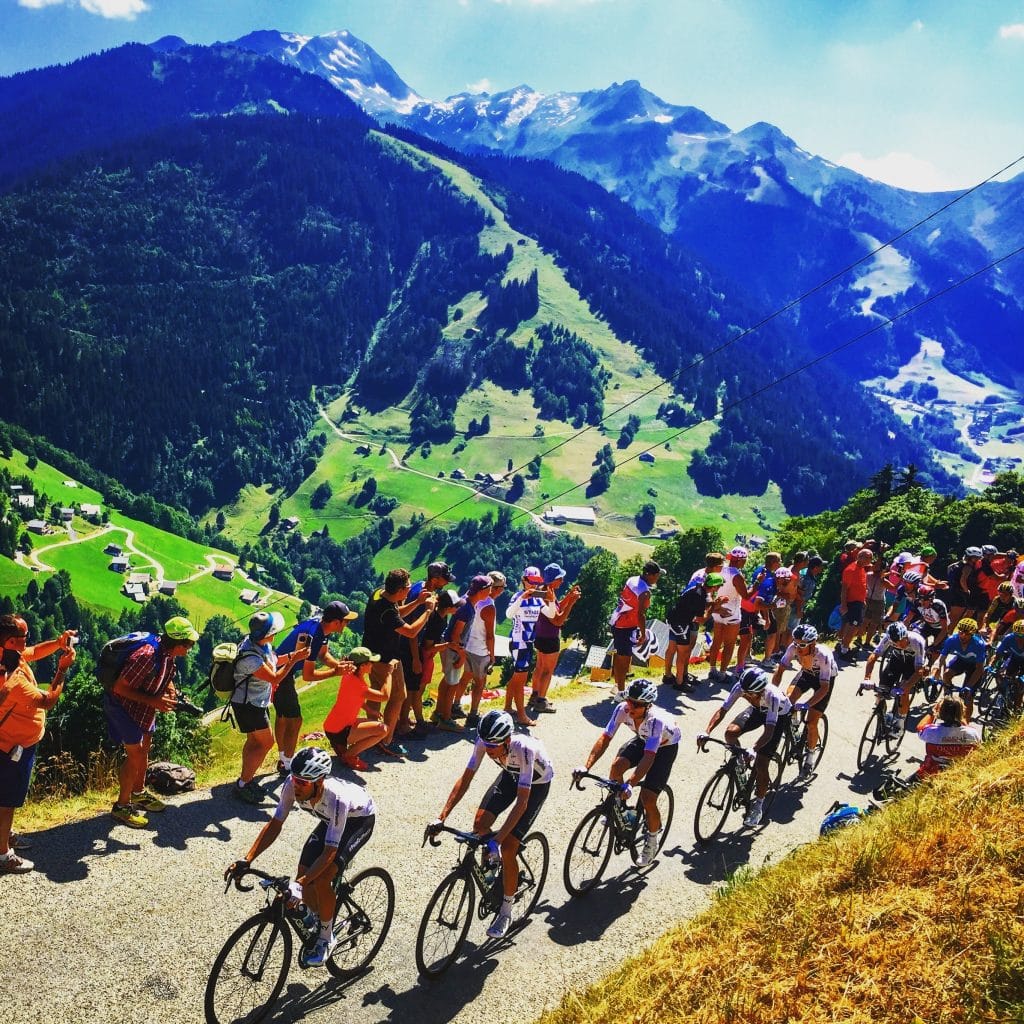
- July 8th, 2022 Cycling
We are super excited that we get to see the Tour de France in Morzine once again.
As I write this, the village is going through a mini makeover. The bunting is going up, and everything’s getting a fresh coat of paint. But one of the best things is that many of the roads have freshly laid tarmac, making our own Buzz group rides and cycling camps even better.
With all the hype, we thought we would take a quick look at the history of the Tour de France.
The Early Days Of The Tour De France
The Tour de France is considered the world’s most prestigious and brutal bicycle race. The first Tour de France took place in 1903, with just 60 riders taking on the six-stage race, covering 2,428km. It has now evolved into a race covering over 3,300km with over 20 teams of 8 riders from all over the world.
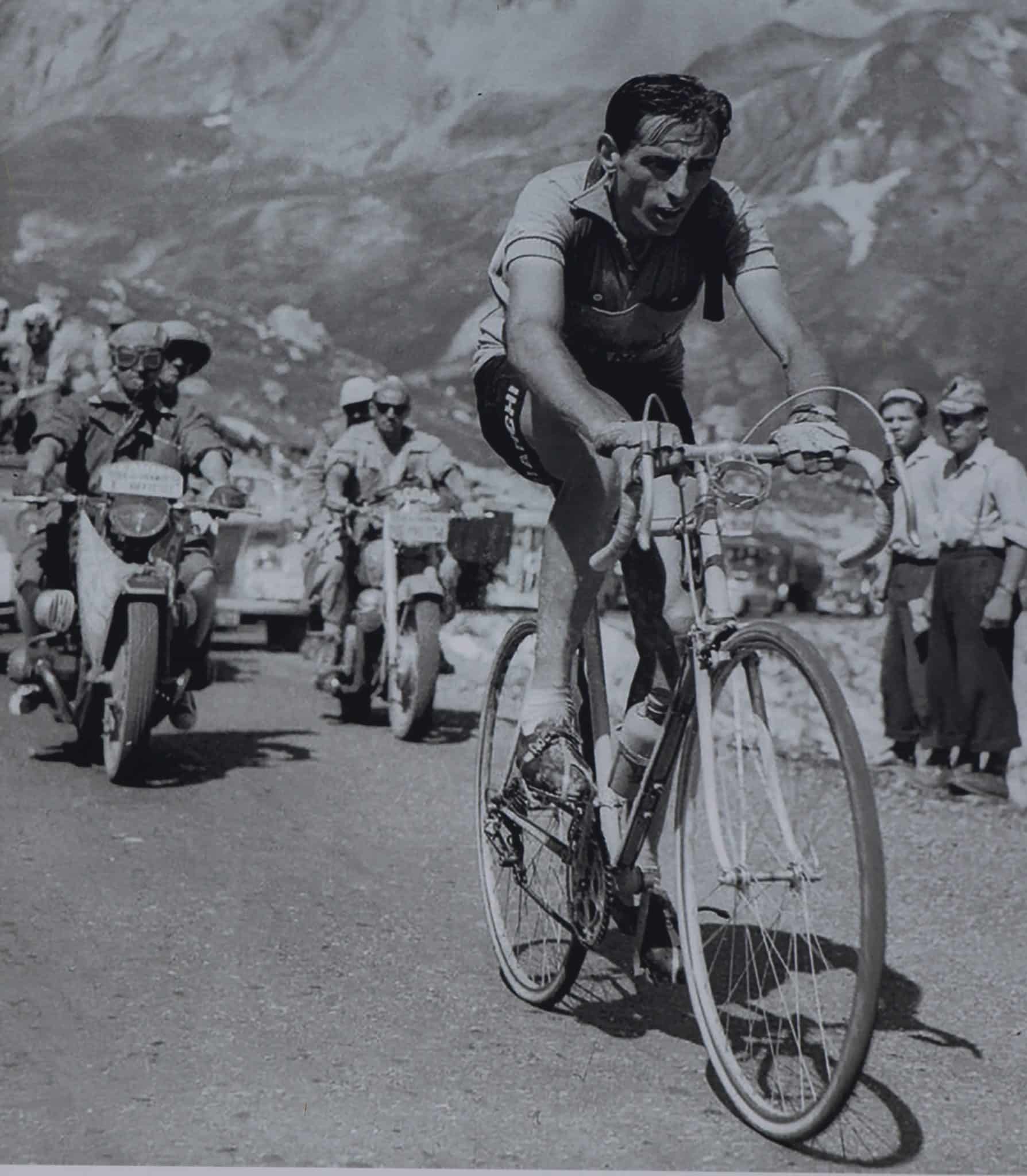
An International Line-Up
Most of the riders in the first race were French, but some Italian, Belgian, Swiss, and German riders took on the challenge too. Their route took them from Paris to Lyon before reaching Marseille and heading back to Paris via Toulouse, Bordeaux, and Nantes. The stages averaged 405km, meaning they had to race both night and day.
The winner of the first Tour de France was Maurice Garin, who crossed the line in front of 20,000 people. However, the following year’s race nearly became the last, as many riders were caught cheating. The ones that were caught were found to be sabotaging other riders’ bikes and jumping on trains.
Evolution Of The Tour de France
In 1905, the route changed, and the Ballon d’Alsace mountain stage was introduced, along with more strict rules to prevent cheating. The route changes continued each year, with stages taking the riders through the Pyrénées in 1910 and the Alps in 1911. These additional stages doubled the race distance but reduced the average length of the stage. However, the average stage length was still 356km.
The Tour de France has taken place every year since 1903, but there was a 5-year break from 1914 to 1919 during the first world war. There were plans for the race to be held in 1940. Germany requested the Tour to pass through, but the organisers refused. Then the second world war made it impossible.
Today’s Tour de France riders race on smooth, paved roads. But in the early days, many roads were unpaved, and there were no helmets to protect riders during crashes.
Also, back then, riders raced as individuals and not in teams. This meant that they had no support and had to make their own repairs. The punishing roads took their toll on primitive bikes and tyres, so riders wrapped tyres and tubes around their bodies, ready for when they got punctures.
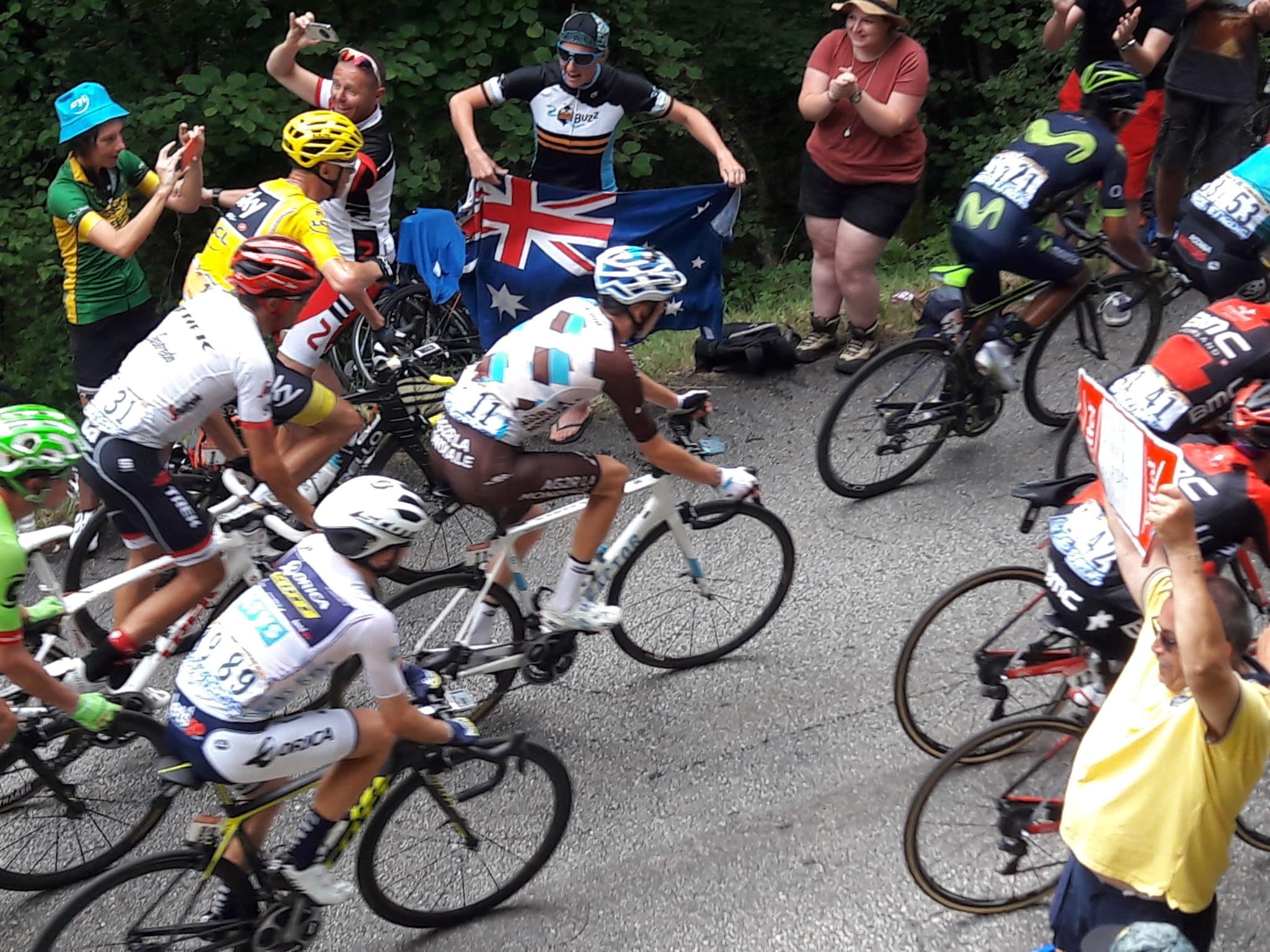
Questionable Fuelling Strategies
These days Tour de France racers have a strict strategy regarding their pace and how they fuel their bodies. Back in the 1900s, it wasn’t unheard of for riders to take sips of wine to enhance their performance and smoke cigars between stages.
1926 saw the longest Tour de France route, which covered 5,745km. Races of these distances were phased out in the early 1930s. This was when the tour first became sponsored and broadcast live on the radio.
There were more evolutions in the 1930s when in 1937, derailleurs were used for the first time, which helped riders when climbing brutal mountain stages.
The Tour de France continues to evolve each year, with alterations in the route. It is a spectacle that attracts attention from all over the world and is closely followed by millions of people. Each stage sees thousands of people brave all kinds of weather to cheer on their favourite riders.
The Yellow Jersey
After the First World War, the yellow jersey (maillot jaune) was introduced. The colour yellow was chosen so spectators could easily spot the race leader. Yellow is also the colour of the paper that L’Auto was printed on.
L’Auto was the Tour de France’s founding newspaper that kept the public up to date with the heart-stopping drama, legendary rivalries and bitter tragedies of the race. The first man to wear the malliot jaune, was Eugene Christophe on 18th July 1919.
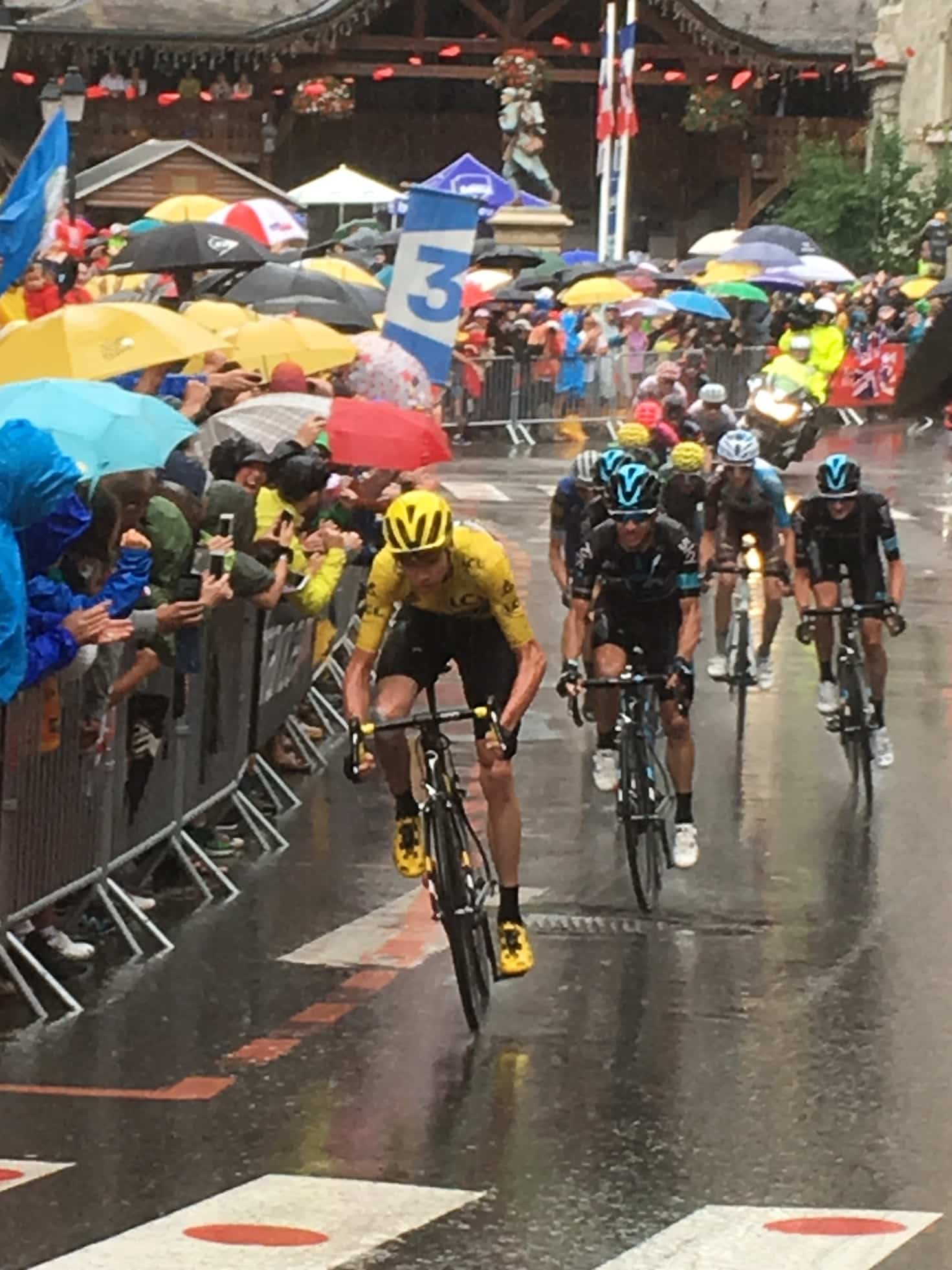
The Tour de France In Morzine
With all this history and prestige, you can see why Morzine is excited about the Tour passing through. We are very familiar with the cols used in the mountain stages, and we can see why the Tour de France’s 2nd most challenging stage ever finished in Morzine.
The 2022 Tour de France Route To Morzine
The 2022 route sees the riders take a hilly route on the roads from Morzine and Megève. In the first 100 kilometres, they travel over the Côte de Chevenez (2.2 kilometres at 2.9%), Col de Jambaz (6.7 kilometres at 3.8%) and Côte de Châtillon-sur-Cluses (4.5 kilometres 3.9%) before a flat section of some 25 kilometres ushers in the climb to the line.
The finale is a 21.2 kilometres climb at 4.1%. It’s a steady slog with the steepest part, 200 metres at 7.1%, at the end.
The Tour has passed through Morzine 21 times since 1975, and the landscape has become the ideal backdrop for some iconic moments.
Six years ago, the Tour de France went in the opposite direction, so riders arrived in Morzine from Megève. The mountain stage saw Ion Izagirre come out on top as he raced up the Rue du Bourg to the finish line.
In 2006 Floyd Landis did the unthinkable by putting on a performance that was too good to be true. He blew his rivals away on the five climbs on the 120km stage to Morzine. However, he failed a drug test, taking him from superhero to super villain.
During the 2010 Tour de France, Australian rider Cadel Evans wore the yellow jersey for the first time Morzine. On the eighth stage, from Station des Rousses in the Jura mountains to the summit finish at Morzine-Avoriaz, Evans took the first position, earning the prestigious jersey. However, the experience was short-lived; he lost the position after having a bad crash, causing him to ride with a broken elbow.
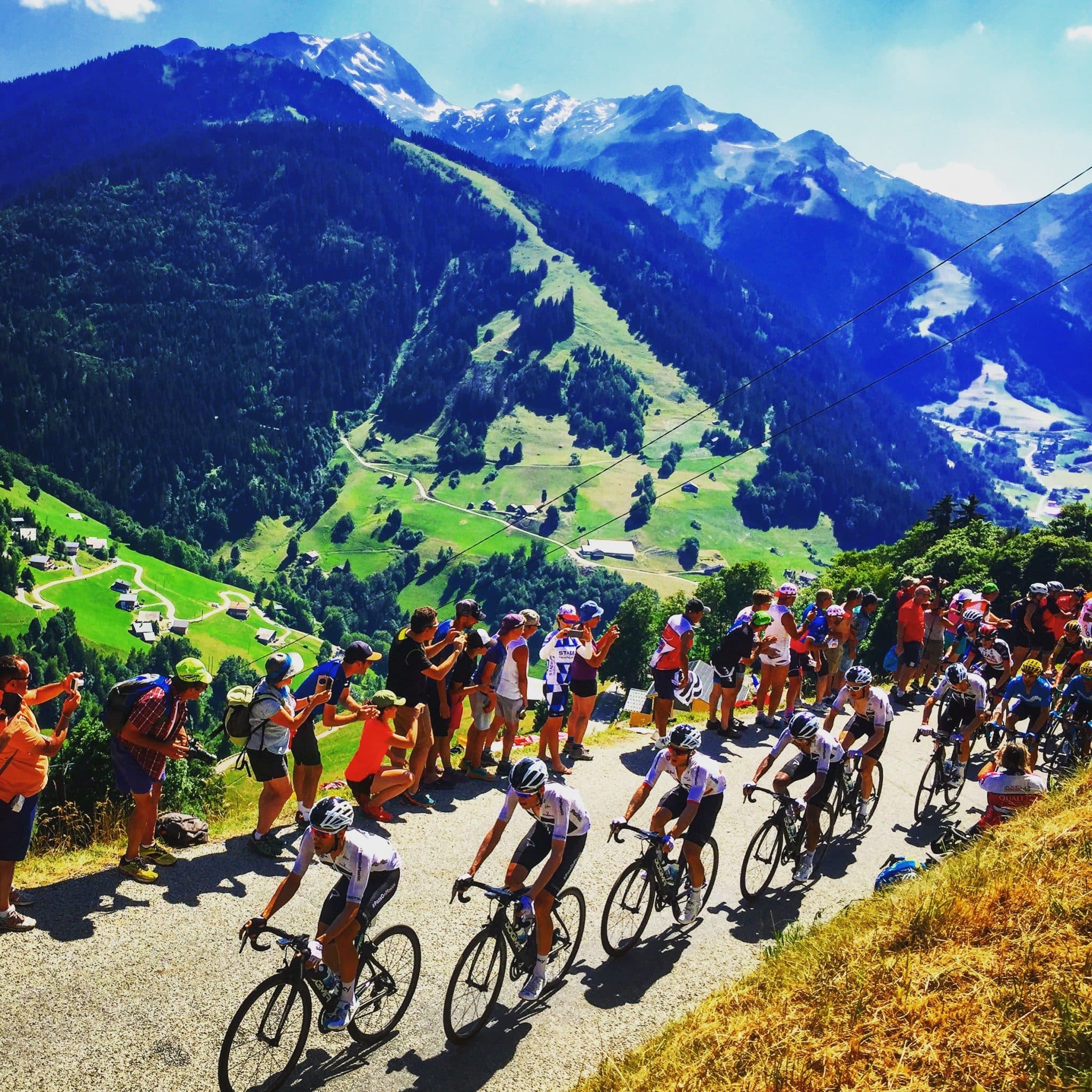
Experience The Mountain Stages For Yourself
The Tour de France mountain stages around Morzine are legendary. But they also provide stunning scenery and an incredible sense of achievement.
You can join us on one of our group rides or Morzine cycling experiences with like-minded people. Alternatively, you can pop into the Hive and ask us about the various routes while fuelling up at Wild Beets Kitchen.
Nutrition For Female Cyclists
Cycling is a physically demanding sport that requires strength, stamina, and strategic fueling. For female cyclists, tailored nutrition is essential to improve performance and support overall health. With unique physiological needs influenced by hormonal fluctuations, bone density considerations, and energy requirements, nutrition for female cyclists must be approached with intention…
Continue reading...Training With A Stationary Bike
Cycling indoors without going anywhere can be surprisingly good fun. Training with a stationary bike brings many benefits that help you reach your fitness goals in a safe and controlled environment. Let’s get into the advantages of training with a stationary bike and why you should incorporate it into your…
Continue reading...Summer Cycling 2022
- May 18th, 2022 Cycling
We love the Summer! Cycling up, down and around the mountains is such a great way to build strength and stamina, while being able to enjoy gorgeous scenery along the way. We have already been lucky enough to be getting out on our road bikes, starting with a few rides…
Continue reading...The summer ends and autumn begins
- September 1st, 2021 Cycling, Events, Fitness, Health, Running, Strength, Swimming, Tours, Training Camps, Triathlon
As another great summer draws to a close we are grateful that we have been able to open the Hive, swim in pools and lakes, ride our bikes over mountains, run around outside and enjoy the company of others. The gym has been open for 3 months now and we…
Continue reading...

